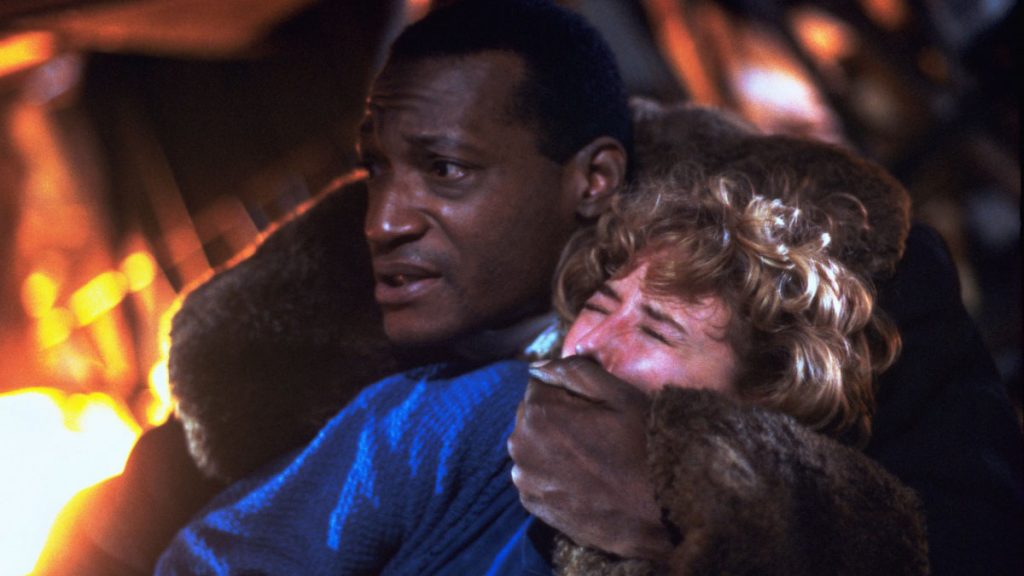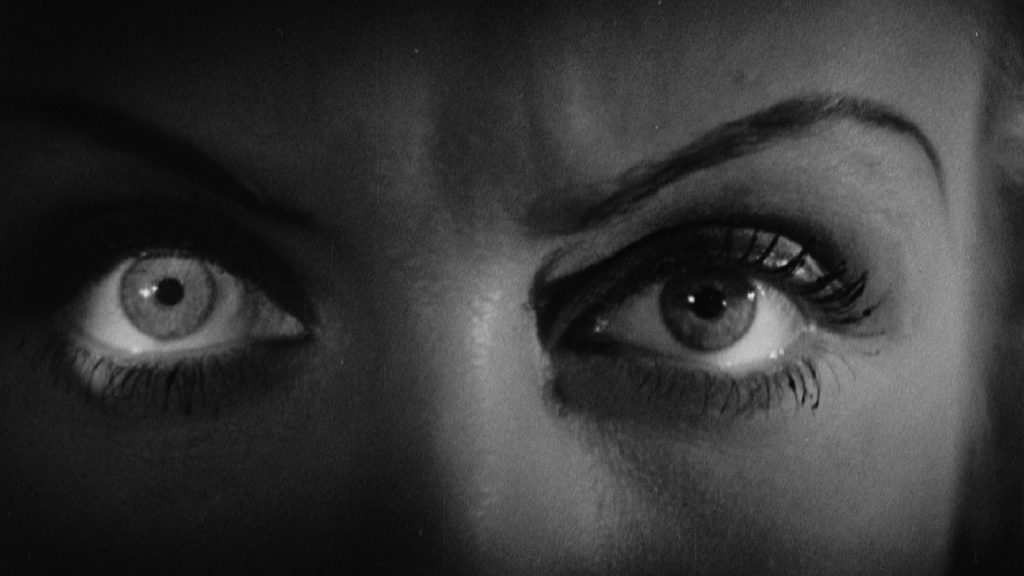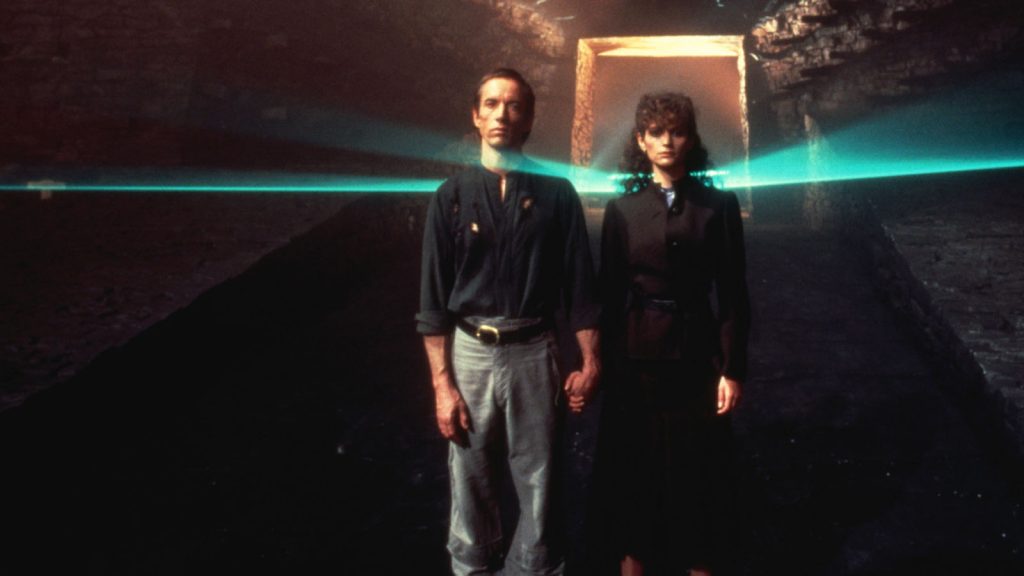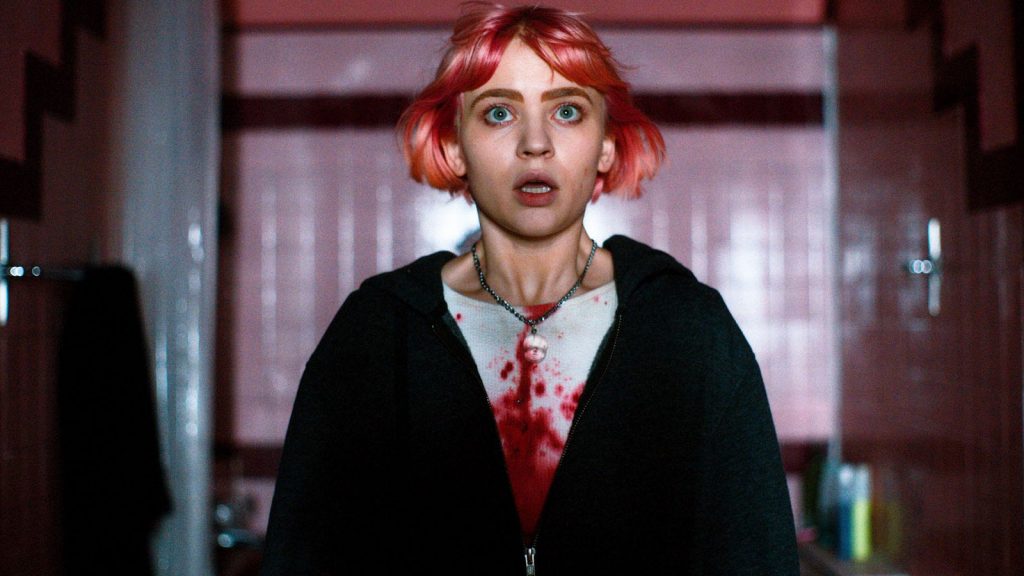I first saw Candyman in high school, on a VHS from the local video store, where my friends and I rented three to five films every weekend to watch in the dorm on our prohibited TV/VCR combo hidden away in a closet. Ranging from fun favorites like The Last Dragon and The Meteor Man, to an endless parade of kung-fu and horror films, and international classics like Yellow Earth and Ran, our tastes were pretty broad. We psyched ourselves up for Candyman, having heard it was horrifying, and waited until after lights out and final checks by the dorm head to pop the tape in. It did not disappoint, with one freaked-out friend even sleeping on the floor that night because his roommate had gone home for the weekend. Of course, we endlessly mocked him—in the way teenage boys show affection—not wanting to admit how much the film had also gotten to us.
Based on the short story “The Forbidden” by Clive Barker (published in volume five of his seminal series of short stories, Books of Blood), the movie shifts its setting from Liverpool to Chicago—and from the British class divide to the American racial divide—a decision made by Bernard Rose in collaboration with Barker, who worked closely with the director as he adapted the story. The new backdrop of the Cabrini-Green housing projects reflects the concern of urban crime that was rampant in the ’90s and sets it apart from other (sub)urban slashers by taking place in a primarily Black space, in contrast to the white neighborhoods of A Nightmare on Elm Street or Halloween. Countering the typical slasher setup, in which a monstrous other moves into a white middle-class neighborhood where it punishes teenage transgressions and threatens white property values, Candyman connects a long history of racial violence so often ignored by the normative society, and Helen (the absolutely phenomenal Virginia Madsen, in one of her best roles) is the intruding other: a white upper-class academic studying urban mythology whose obtrusion into a Black space begins a cycle of violence that can only stop with her death.
Myth and oral traditions encompass an ever-changing chain of signification that involves origins, history, memory, holiness and unholiness, the grotesque and the beautiful, the knowable and the unknowable, and a million more dichotomous pairs that make up human existence and the ways we interact with the world. Helen’s greatest sin is her attempt at taxonomy, trying to classify the Candyman myth of Cabrini-Green into something the university can understand. Classification and clinical dissection do not belong in rumor and hearsay. Unlike the dream phantom of Freddy Krueger, who haunts white teens via the suppression of sex and the violence by their parents, Candyman haunts the empty void of Cabrini-Green as both a protector and an aggressor. Freddy is a myth suppressed that’s come to inflict violence, while Candyman is a myth denied, categorized, and institutionalized that’s come to inflict violence.

American visual culture, especially that of the late 1980s and early 1990s, with the rise of gangsta rap and movies, plus white anxiety over street crime, explicitly makes the connection between the urban poor and people of color. Candyman starts the film as a campfire story that a white undergraduate is narrating to Helen. The victims are also white and archetypes of this type of oral tradition: the virginal “good girl” babysitter and the leather-clad “bad boy” punished for their sexual transgression by Candyman, who can only be seen for a split second in the mirror. Candyman becomes, at least to Helen, something more authentic when two Black janitors overhear the story and tell her that he actually lives at Cabrini-Green, where he killed a woman named Ruthie Jean, whose call to the police about someone trying to break through her bathroom wall to kill her had been ignored. It only becomes real to Helen when brought into a space she already equates with violence (the projects), and becomes excited when she finds confirmation of Ruthie Jean’s murder in the archives. Her thesis partner, Bernadette (Kasi Lemmons), admonishes her, saying, “Helen, this is sick. This isn’t one of your fairy tales; the woman got killed here.”
Yet the two go to Cabrini-Green anyway, the desire to beat their male colleagues to the punch overcoming any trepidation. They find it mostly empty but begin documenting the building’s graffiti that chronicles the Candyman myth, and disturb a shrine where residents have left candy stuffed with razor blades in tribute to him. The real trouble comes when Helen begins stirring up doubts in Candyman’s most fervent believers: the children of Cabrini-Green. After a gang leader, who has been dressing up as Candyman, is jailed for assaulting Helen, she tells young Jake, who has been acting as a guide through the complex, “Candyman isn’t real. He’s just a story. You know, like Dracula or Frankenstein. A bad man took his name so he could scare us, but now that he’s locked up, everything’s gonna be okay.”
This is what brings Candyman (Tony Todd) out for the first time, appearing to Helen in the parking lot as she looks through her slides of graffiti, head to the sky—a dark figure silhouetted by sunlight coming through gaps in the concrete structure. He is part of the city, and yet somehow outside of it. He doesn’t belong in Helen’s space, but her disbelief, or, more accurately, her sowing disbelief among his congregation, is what drew him here. Candyman is well-dressed, in his sharp black leather shoes, pinstripe suit, and long, dark fur coat. He is handsome and sure of himself, and his words are power. “You were not content with the stories, so I was obliged to come,” Candyman whispers to her alluringly. “Be my victim. Be my victim. I am the writing on the wall, the whisper in the classroom. Without these things, I am nothing. So now, I must shed innocent blood.” There exists a physical seduction between Candyman and Helen, to be sure, but also a seduction of story, suggesting that to create/embody a narrative is to know yourself and your history in the context of others. It is a desire for origination, and also for celebrity. To be told is to be known. Once Candyman is summoned into reality, there is only one path forward: Helen must become part of the myth in order to make people believe again.
Of course, we didn’t really understand much of this at 14, crowded around a small screen in a dorm room while cracking jokes about pimps with hook hands to dissolve our anxiety, daring each other to repeat “Candyman” five times in the bathroom mirror down the hall. The movie stuck with us, though, the evening becoming part of our own story, still recounted at reunions all these years later. It is easy to see why—bolstered by Philip Glass’s ethereal score and shot by the fantastic Anthony B. Richmond (whose work on 1973’s Don’t Look Now won him a BAFTA), Candyman is a romantic and deeply tragic film that transcends its genre and is, in my opinion, a masterpiece.

lives in rural Connecticut across from spooky old ruins in the woods. He is part of Boondocks Film Society, a group that programs unique pop-up film events in Litchfield Hills, the Hudson Valley, and the Berkshires. He has programmed for Film at Lincoln Center (Scary Movies, My First Film Fest) and Subway Cinema (New York Asian Film Festival, Old School Kung Fu Fest). He has written extensively about Asian cinema, most recently co-editing an issue of NANG magazine dedicated to Archival Imaginaries in Asia.
Hae-won (Ji Seong-won) works at a bank in Seoul, a hyper-competitive and male-dominated space that leaves her stressed and loath to get involved with others.
BY RUFUS DE RHAM | November 11, 2024
Even after the financial success of Tim Burton’s 1985 feature debut, Pee-wee’s Big Adventure, Warner Bros. rejected his vision for Batman and he was left in search of a follow-up.
BY ANN OLSSON | March 17, 2023
Paperhouse has many frightening scenes, but one stands out as particularly scary for its brevity and almost inexplicable terror. The film’s young protagonist, Anna (Charlotte Burke), is having...
BY MICHAEL KORESKY | October 31, 2021

This pre-Code offering packs a lot of story into its typically brisk running time, with several plot threads weaving together a (not always successful) tapestry of spooky and criminal doings.
READ MORE >
BY ANN OLSSON | Month 00, 2021

In what could be the fastest-resulting rape revenge movie, a drunken lout brutally forces himself on Ida, the young woman who doesn't return his affections, during a party over Labor Day.
READ MORE >
BY LAURA KERN | Month 00, 2021

Beast is a lot of movies in one package - fractured fairy tale, belated-coming-of-age story, psychological drama, regional horror film - but above all it's a calling card for its leading lady, Jessie Buckley.
READ MORE >
BY LAURA KERN | Month 00, 2021